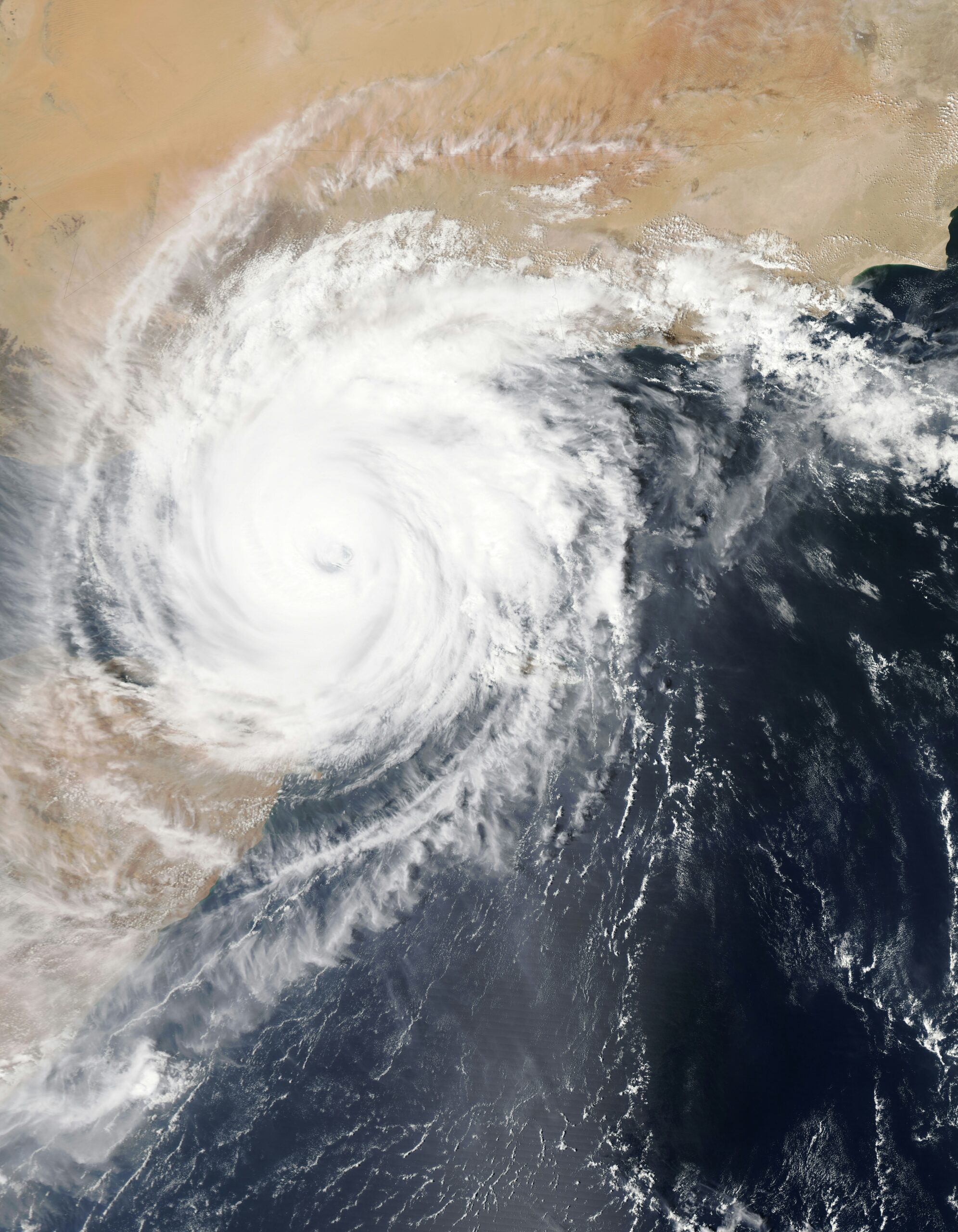“`html
Introduction to Typhoon Gaemi
Typhoon Gaemi is a significant meteorological event that originated in the western Pacific Ocean. It developed from a tropical depression, gaining strength and becoming classified as a typhoon by the Japan Meteorological Agency. The storm’s name, “Gaemi,” is derived from the Korean word for ant, symbolizing its initially small but rapidly growing intensity. Typhoon Gaemi first formed as a low-pressure system over the warm waters of the Pacific, which provided the necessary energy for its escalation.
As the typhoon traversed the ocean, it intensified, reaching wind speeds that classified it as a Category 4 storm on the Saffir-Simpson Hurricane Wind Scale. With maximum sustained winds exceeding 130 miles per hour, Typhoon Gaemi presented a formidable threat to the regions in its path. The storm’s trajectory was closely monitored by meteorological agencies, which tracked its movement and issued warnings to the affected areas.
Typhoon Gaemi made its initial landfall in Taiwan, where it caused widespread damage due to strong winds and heavy rainfall. The typhoon then continued its path towards the Philippines, exacerbating the destruction with flooding and landslides, particularly in the northern regions. The final stage of Gaemi’s journey saw it making landfall in China, where it brought further devastation, impacting coastal cities and inland areas alike.
The regions affected by Typhoon Gaemi faced significant challenges, including power outages, infrastructure damage, and displacement of populations. Emergency response teams in Taiwan, the Philippines, and China were mobilized to provide aid and support to the communities hardest hit by the storm. The collaborative efforts of local and international agencies were crucial in mitigating the typhoon’s impact and aiding recovery efforts.
Impact on Taiwan
Typhoon Gaemi’s passage through Taiwan brought widespread devastation, severely affecting both urban and rural areas. The storm’s relentless winds and torrential rains resulted in significant infrastructure destruction, with numerous buildings and roads either heavily damaged or completely obliterated. Flooding was rampant, inundating low-lying regions and causing substantial disruptions to daily life.
One of the most critical issues faced by Taiwanese residents during Typhoon Gaemi was the extensive power outages. Thousands of households were left without electricity, compounding the difficulties brought about by the storm. Furthermore, the typhoon’s fury led to a considerable number of casualties and injuries. According to official reports, the death toll reached several dozen, while hundreds more suffered from injuries ranging from minor to severe.
The human toll extended beyond immediate physical harm, with thousands of individuals being displaced from their homes. Emergency shelters quickly filled to capacity as families sought refuge from the unrelenting storm. The Taiwanese government, in response, mobilized extensive emergency response measures. Rescue operations were launched swiftly, with teams working around the clock to evacuate residents from the most affected areas and deliver essential supplies to those in need.
Local authorities and residents have shared harrowing accounts of their experiences. “The winds were so strong, it felt like the house would collapse at any moment,” recounted a resident of a coastal town hit hardest by the storm. Another local official described the scene as “a war zone” and emphasized the urgent need for coordinated relief efforts.
Despite the challenges, the resilience and solidarity of the Taiwanese people have shone through. Communities have come together, offering support and resources to those most affected by Typhoon Gaemi. The government’s prompt action and the collective effort of the citizens have been crucial in navigating the immediate aftermath of this natural disaster.
Impact on the Philippines
Typhoon Gaemi brought immense devastation to the Philippines, leaving a trail of destruction that has profoundly affected numerous communities. The hardest-hit areas include the provinces of Albay, Sorsogon, and Catanduanes, where entire villages were submerged under floodwaters, and strong winds uprooted trees and tore apart homes. The property damage is substantial, with initial assessments suggesting that thousands of homes have been either partially or completely destroyed. Critical infrastructure, such as roads, bridges, and power lines, has also been severely damaged, complicating rescue and recovery efforts.
The human toll of Typhoon Gaemi is equally staggering. As of the latest reports, the death toll stands at over 150, with many more individuals injured or missing. Hospitals and emergency services are overwhelmed, struggling to provide care for the injured and searching for those who remain unaccounted for. The scale of the disaster has stretched the resources of local authorities, making it difficult to meet the immediate needs of the affected population, including access to clean water, food, and medical supplies.
Rescue teams face numerous challenges, from navigating flooded areas to dealing with the continuous threat of landslides. Despite these obstacles, they are working tirelessly to reach those in need, often risking their own lives in the process. The community’s resilience is evident as neighbors help each other, and local volunteers join the rescue efforts. International aid has begun to pour in, with various countries and humanitarian organizations providing much-needed assistance in the form of relief supplies, financial aid, and medical support.
Personal stories from survivors paint a vivid picture of the typhoon’s impact. One survivor, Maria Santos from Albay, recounted how her family sought refuge on their roof as floodwaters rose rapidly. “We lost everything, but we are grateful to be alive,” she said. Such testimonials highlight not only the physical devastation but also the emotional and psychological toll on the affected populations. The road to recovery will be long, but the collective efforts of the local communities, rescue teams, and international aid provide a beacon of hope amidst the chaos.
Arrival in China
Typhoon Gaemi, after leaving a trail of destruction in Taiwan and the Philippines, made its formidable landfall in the southeastern regions of China. The provinces of Fujian and Guangdong were the most severely impacted, with initial reports indicating widespread structural damage, uprooted trees, and significant flooding. Coastal cities such as Xiamen and Shantou experienced the brunt of the storm, facing relentless winds and torrential rains.
In anticipation of Typhoon Gaemi’s arrival, Chinese authorities implemented a series of comprehensive measures to mitigate potential damage and safeguard the population. The National Meteorological Center issued the highest level of typhoon alert, prompting local governments to activate emergency response plans. Evacuation orders were swiftly executed, resulting in the relocation of thousands of residents from vulnerable coastal and low-lying areas to safer locations.
Emergency services were on high alert, with rescue teams, medical personnel, and disaster response units pre-positioned to respond to any emergent situations. Reinforcements from the People’s Liberation Army were also mobilized to support relief efforts, ensuring a coordinated and efficient response to the storm’s impact. Additionally, temporary shelters were established, stocked with essential supplies such as food, water, and medical kits, to accommodate displaced individuals.
The public response to Typhoon Gaemi was one of cooperation and resilience. Residents heeded government warnings, securing their homes and businesses against potential damage and adhering to evacuation protocols when necessary. Community organizations and volunteers played a pivotal role in assisting with preparations and providing support to those affected. Despite the adverse conditions, the collective efforts of authorities and citizens demonstrated a unified front in the face of natural adversity.
Humanitarian Response and Relief Efforts
In the wake of Typhoon Gaemi’s devastating impact across Taiwan, the Philippines, and China, a robust humanitarian response has mobilized to address the urgent needs of affected communities. Local and international aid organizations have swiftly coordinated efforts to provide essential assistance, focusing on food, shelter, and medical care to mitigate the immediate aftermath of the disaster.
Local governments in the affected regions were among the first responders, utilizing their resources to evacuate residents, set up temporary shelters, and distribute emergency supplies. In Taiwan, the National Fire Agency and local municipalities worked tirelessly to clear debris and restore essential services. Similarly, the Philippine Red Cross and various local NGOs played a crucial role in immediate relief operations, providing food packs, hygiene kits, and medical support to those in need.
International aid organizations have also been instrumental in the relief efforts. The United Nations Office for the Coordination of Humanitarian Affairs (OCHA) has been pivotal in bringing together various global entities to streamline aid delivery. Organizations like the International Red Cross, World Food Programme (WFP), and Médecins Sans Frontières (Doctors Without Borders) have deployed teams to the hardest-hit areas, offering critical support ranging from medical care to nutritional aid and psychological counseling.
One of the significant challenges faced in delivering aid has been the disruption of infrastructure. In many areas, roads have been rendered impassable due to landslides and flooding, complicating the logistics of transporting supplies. Additionally, communication breakdowns have hampered coordination efforts, making it difficult to assess needs accurately and allocate resources efficiently.
Despite these obstacles, the resilience and collaboration among various agencies have ensured that aid reaches those most in need. Through a combination of air and sea transport, and leveraging local networks, relief efforts have gradually overcome logistical hurdles. The tireless dedication of responders, coupled with the support from the international community, underscores the collective commitment to alleviating the suffering caused by Typhoon Gaemi.
Economic Impact and Infrastructure Damage
Typhoon Gaemi has left a significant economic footprint across Taiwan, the Philippines, and China, with far-reaching consequences. Initial estimates suggest that the combined financial cost of the damage could surpass several billion dollars, impacting various sectors profoundly. Local businesses, particularly small and medium-sized enterprises, have borne the brunt of the disruption. Many have faced temporary closures, loss of inventory, and severe property damage, which could lead to prolonged recovery periods and potential bankruptcies.
The agricultural sector has also been severely affected. In Taiwan and the Philippines, vast tracts of farmland have been inundated, leading to the destruction of crops that are crucial for the local economy. Rice paddies, banana plantations, and other essential agricultural areas have suffered extensive damage, which not only affects immediate food supply but also has long-term implications for food security and export revenues. In China, the agricultural impact has been similarly devastating, with extensive flooding causing significant losses in key farming regions.
Infrastructure damage is another critical aspect of Typhoon Gaemi’s impact. In Taiwan, several major highways and bridges have been destroyed or severely damaged, disrupting transportation and communication networks. The Philippines has seen widespread destruction of roads, bridges, and public buildings, including schools and hospitals, which hampers rescue and relief efforts. In China, the typhoon has caused significant damage to infrastructure in coastal cities, with reports of collapsed buildings, damaged ports, and power outages affecting millions of residents.
The long-term economic repercussions are likely to be substantial. Rebuilding efforts will require significant investment from both public and private sectors, stretching already limited resources. Economic growth may slow as funds are diverted from development projects to disaster recovery. Additionally, the psychological impact on affected populations, combined with the financial strain, could lead to broader societal challenges. Typhoon Gaemi’s legacy will be felt for years to come as economies and communities strive to rebuild and recover.
Environmental Consequences
Typhoon Gaemi has left a significant mark on the natural landscapes of the regions it impacted. In Taiwan, the storm triggered massive landslides, uprooting trees and altering the topography. The heavy rainfall saturated the soil, making it unstable and prone to further erosion. In coastal areas, the force of the typhoon led to significant shoreline erosion, reshaping beaches and coastal habitats. Meanwhile, in the Philippines, the widespread flooding inundated agricultural lands, contaminating soil and water resources with debris and pollutants.
The wildlife in these regions has also faced severe disruptions. In Taiwan, the typhoon’s intensity displaced numerous terrestrial and aquatic species, forcing them to seek refuge elsewhere or face mortality. Coastal and marine ecosystems, such as coral reefs and mangroves, have suffered physical damage from strong waves and storm surges. The Philippine archipelago, home to diverse ecosystems, witnessed similar disruptions. Many species, including endangered ones, experienced habitat loss, which could have long-term implications on their populations.
Beyond immediate physical impacts, Typhoon Gaemi has influenced local weather patterns. The storm injected vast amounts of moisture into the atmosphere, potentially altering precipitation patterns in the affected regions. This alteration can lead to a cascading effect, influencing weather systems and potentially contributing to more extreme weather events in the future. The interplay between the typhoon and existing climatic conditions underscores the complexity of forecasting and understanding such natural phenomena.
Climate change plays a crucial role in the frequency and intensity of typhoons like Gaemi. Rising sea surface temperatures provide more energy for these storms, making them more powerful and destructive. Additionally, changing atmospheric conditions can affect storm paths, leading to unpredictable and widespread impacts. As global temperatures continue to rise, the likelihood of intense typhoons and their associated environmental consequences may increase, posing a significant challenge for affected regions.
Recovery and Future Preparedness
In the aftermath of Typhoon Gaemi, Taiwan, the Philippines, and China have initiated extensive recovery efforts to rebuild and support the affected communities. Immediate measures include providing emergency shelter, medical aid, and food supplies to displaced residents. Governments and international aid organizations are working in tandem to ensure that the basic needs of the population are met swiftly and efficiently.
In Taiwan, local authorities have mobilized resources to clear debris and restore essential services such as electricity and water supply. Community centers and schools are being repurposed as temporary shelters, while efforts to repair infrastructure like roads and bridges are underway. The government has also launched financial aid programs to assist families and businesses in their recovery, emphasizing the importance of swift economic stabilization.
The Philippines, frequently battered by typhoons, is leveraging its experience to enhance recovery protocols. The National Disaster Risk Reduction and Management Council (NDRRMC) is coordinating with local governments to expedite relief operations. Lessons learned from previous disasters have led to the establishment of more robust evacuation plans and improved communication systems to disseminate critical information. Furthermore, there is a strong focus on psychological support for survivors, recognizing the importance of mental health in the recovery process.
China is employing a multi-faceted approach that includes both immediate relief and long-term resilience building. The central government has deployed rescue teams and military personnel to assist with evacuation and relief distribution. In parallel, there is a strategic emphasis on reinforcing infrastructure to withstand future typhoons. Investments are being made in flood defense systems, early warning technologies, and community-based disaster preparedness programs.
Across these nations, the experience of Typhoon Gaemi has underscored the necessity for comprehensive disaster risk management strategies. Collaborative efforts between government bodies, non-governmental organizations, and local communities are pivotal in fostering resilience. By integrating lessons from Typhoon Gaemi into future preparedness plans, the affected regions aim to mitigate the impact of forthcoming natural disasters and safeguard their populations more effectively.



